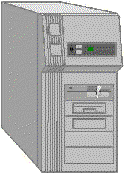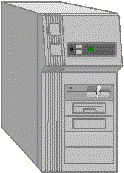|
| |
      
Technical issues can be perplexing! In this section
we attempt to explain technical matters that have special interest in the WISL community.
Web/Backroom Interface
Several years
ago when a computer equipment distributor was first beginning to utilize the Web to offer
access to its product catalog, one of the company's sales reps admitted that the order
requests submitted through its web based system were printed and re-keyed by clerks into
their backroom order processing system. It was explained that this process offered an
opportunity to check the customer's work. This may be true but it requires significant
redundant clerical effort and introduces the possibility of transcription error.
It is obvious that
the customer's work could have been checked without re-entering the entire transaction and
that the real reason for re-entering orders was due to the lack of an automated interface
between the web based order entry facility and the backroom order processing system. This
points out an all too common occurrence in dealing with computer system interfaces. We
have found it particularly perplexing when dealing with desktop based software products
that tend to have a built in assumption that direct user interaction is always involved.
Another glaring example is the failure of EDI to be widely accepted except when forced by
big bully customers such as Walmart, Sears or General Motors. There seems to be an
intrinsic reluctance by developers to accommodate an automated interface with another
system even where they have developmental control over both.

|
 |

|
Backroom Server
|
|
Webserver
|
There are two major
options when dealing with an automated web/background interface. The first is to generate
transaction records from the interactive web based process accumulate them in a file and
transmit them to the backroom system at pre-defined intervals. Typically there would be an
automated process at the backroom end that would then accept and process the transactions.
Often there are files of data required to edit the web based transactions that are
periodically updated on the backroom system and sent in the reverse direction using
similar facilities to update the web based data collection facility. This approach does
not require a constant direct connection between the two platforms and a software layer to
co-ordinate the two systems in real time but it suffers in those cases where it is
desirable to have the current state of the data base and certain processes to be available
to both systems at all times. An example where this approach is acceptable is with WISL's
"Support Request" facility described elsewhere in this newsletter. In fact this
approach is suitable for the majority of data collection facilities that we encounter on
the internet.
An example of an
application that requires a real-time interface is WISL WebRate which provides web based
users with the ability to determine the current cost of shipping something which requires
immediate access to the backroom data base and complex processes that would be extremely
expensive to develop on the web based application. WISL utilizes IBM's Redback middleware
to provide the connection between the web user and the backroom based FAIS rating engine
and data base. An overview document and PowerPoint demo are available at: http://www.wisl.com/wislwebapps/logistics/webrate.htm
|